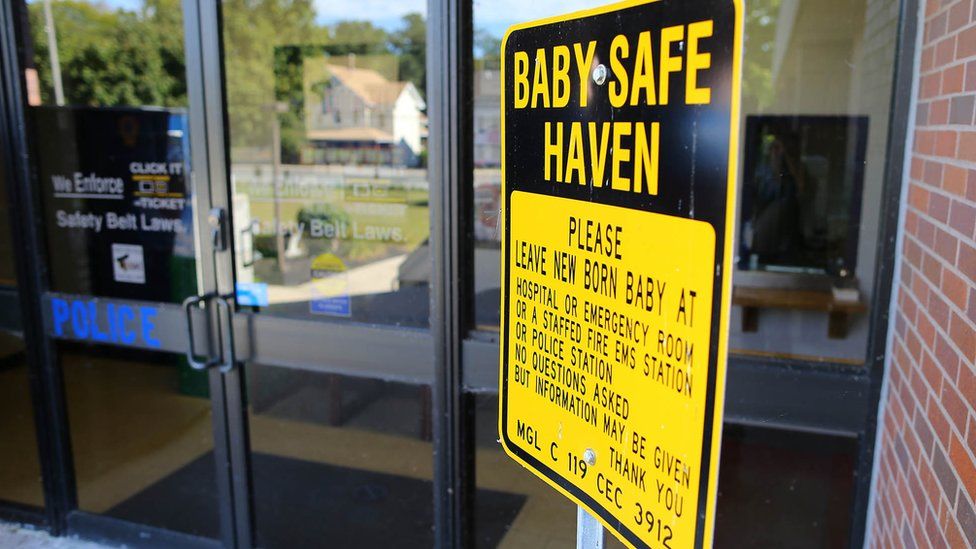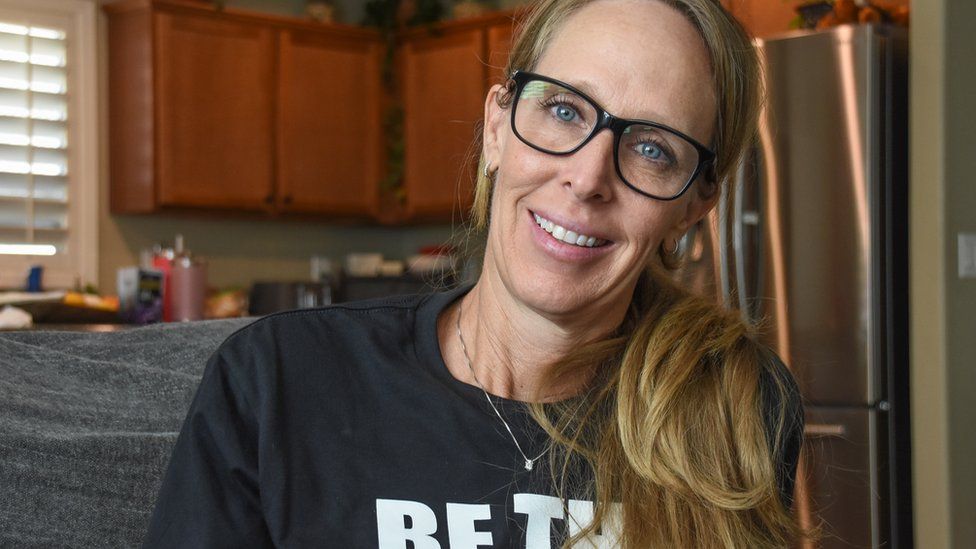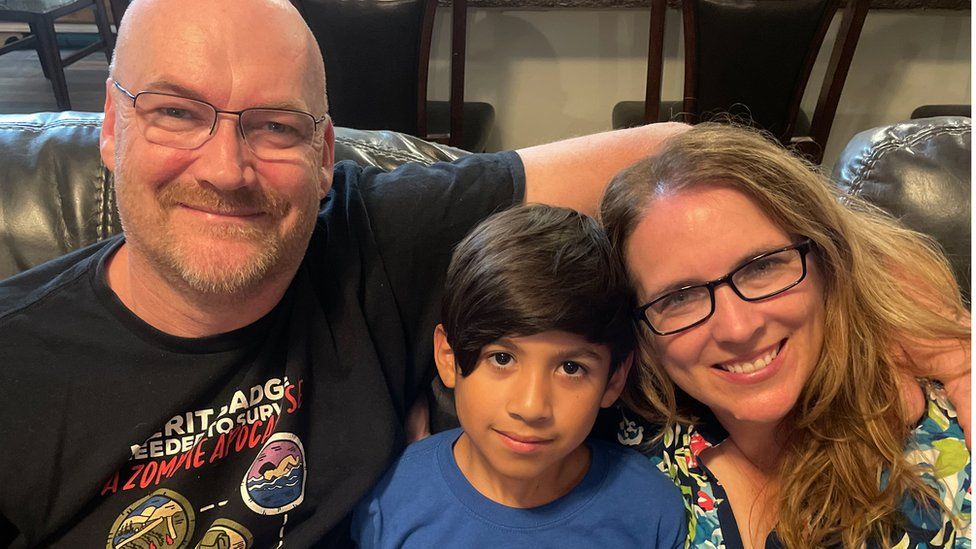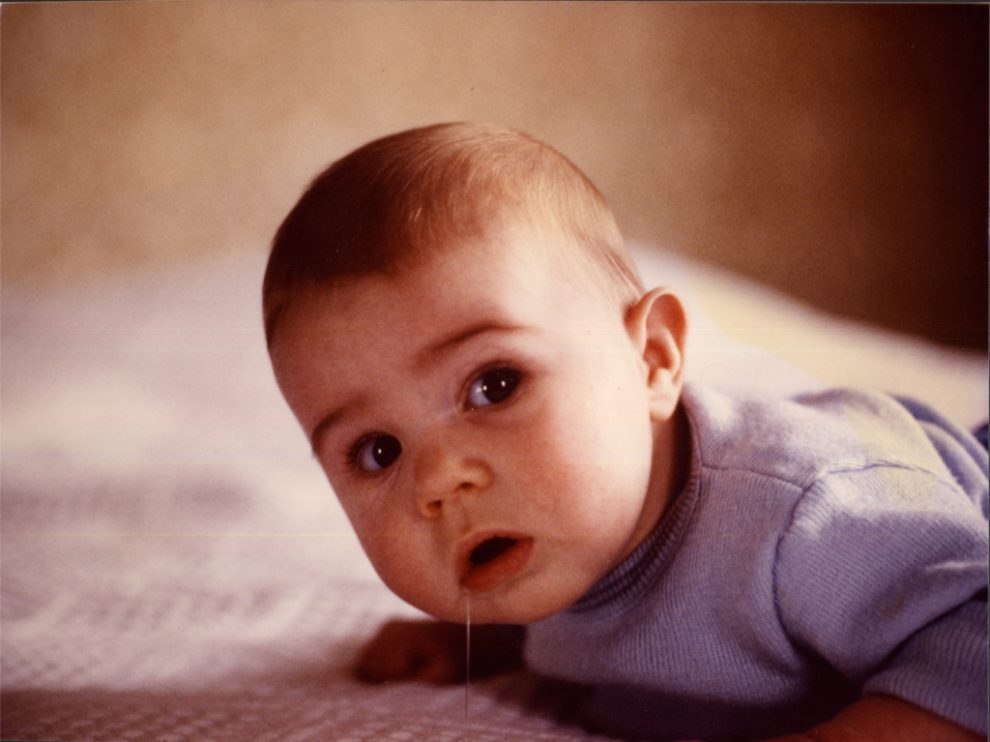The ending of the constitutional right to abortion played a significant role in the outcome of the US midterm elections. One argument used as the Supreme Court considered overturning Roe v Wade in the summer was that an alternative to termination could be found in safe haven laws.
These exist in every state, allowing troubled mothers to anonymously abandon babies at designated sites shortly after giving birth, without prosecution.
This is the story of three people deeply touched by American safe haven laws.
The mother
It was a dark, wet winter’s night on one of Arizona’s endless plains. Driving along an isolated road, Michelle suddenly pulled over.
“I was in so much pain – I couldn’t make it back to get to a hospital,” she remembers. Near a creek, 20 miles from town, Michelle gave birth in her car.
“It was scary. I remember just praying. I was calling out for my Mom… I wanted my Mom.”
While Michelle delivered the baby, her older daughter slept in the back seat. In the gloom, her mobile phone having died, Michelle sat for 15 minutes, her newborn wrapped in a blanket on her lap.
She stared at the child, taking in her baby’s face. Then she started the ignition and drove – fast.
Michelle had told no-one she was pregnant. She was too frightened. The father of her toddler was unpredictable. Separated from him, and no longer dating her new baby’s dad, she felt backed into a corner.

She pulled up at the nearest hospital. She knew about Arizona’s safe haven law – that she could anonymously “surrender” her child without prosecution, as long as the infant was unharmed. So she hurried into reception, the baby in her arms.
“I asked to speak to labour and delivery. They came and talked to me and I told them: ‘I think giving her up is going to be the best option.’ I just wanted her to be safe – from my oldest daughter’s dad.”
Michelle handed the baby to the nurses. She knew the child would now be adopted.
She was in the hospital less than three minutes.

What are baby boxes?
- Michelle gave her baby to medics but they may also be left in a special box or drawer at a hospital or fire station
- In medieval Europe, “foundling wheels” on the side of hospitals and churches served same purpose
- Baby hatches still exist elsewhere but the US is the only nation to comprehensively legislate for abandoned infants
- Safe haven laws were introduced in the US to stop infanticide – first appearing in Texas in 1999 then all other states followed
- Risk of infant homicide is highest on the day of birth. A recent report by the US Centers for Disease Control found that after the introduction of safe haven laws, between 2008 and 2017, the number of babies killed on that first day fell by nearly 67%
- But a causal link is hard to prove – affordable childcare, better parenting skills and an understanding of maternal depression could also explain it
Can these boxes found on US streets save babies’ lives?

The nurse
It was a newborn’s death that propelled Heather Burner to become a passionate advocate for safe havens. More than a decade ago, she was on shift at a Phoenix hospital in the emergency room where she worked as a paediatric nurse.
“A 15-year-old checked in, complaining of abdominal pain. After her vital signs were checked, she went to the bathroom. She delivered her baby by herself and put him in the garbage can. About 20 minutes later, a housekeeper found him. We tried to do life-saving efforts, but we were unsuccessful.”
In spite of the evidence, the teenager denied the baby was hers. It was suspected she was the victim of sexual abuse by a family member.
“It was very traumatic,” says Heather. Now director of the Arizona Safe Haven programme and executive director of the National Safe Haven Alliance (NSHA), she calculates 4,687 babies have been “surrendered” nationally since 1999.

The NSHA runs a helpline, receiving 60-100 calls a month. In June, while the Supreme Court deliberated on Roe v Wade, there was a 300% increase in calls. Anti-abortion groups have long argued safe haven laws eliminate the need for termination – a view echoed during the hearings.
For callers to the NSHA, advice on leaving a baby at a safe haven is a last resort.
“We ask, what prevents you from parenting this child?” says Heather. “Most of the time the baby isn’t the crisis, it’s their situation. Are they homeless? Do they need child care? I’ve literally paid an electricity bill and it made the woman feel she could handle what was coming next.”
Some women callers will go on and parent. Others opt for a regular adoption, and will choose – and perhaps meet – the family who will take on their child. But some will “surrender” their babies at a safe haven.
The baby
West of Phoenix, Porter Olson lives with his adoptive family and adored dog. Porter is an energetic 11-year-old and enjoys camping, gardening and cooking.
In 2011, the Olsons were contacted by the adoption agency they were signed up with. “I got the call, and they said we had a baby,” remembers Michael Olson. He texted three words to his wife Nicole – “Best Day Ever”.
Nicole was in class, teaching. “I called my principal, and said: ‘I need to find out about maternity leave.’ And she said: ‘Why? Are you pregnant?’ And I said: ‘No, but I’m getting a baby – today!'”
Porter’s birth mother had left him in a baby box at a hospital. In Arizona, an adoptive family is usually found the same day. And, like the Olsons, they might know absolutely nothing about their new baby.

“I never really minded that – I just figured we’d grow together and figure that part out,” says Nicole. Even so, the couple felt it might be useful for Porter himself to have more information.
“So one day my mum was going to get me a DNA test. Whatever I was, she was going to celebrate that,” says Porter, taking up the story. “And we got the test, and the doctor said, ‘Congratulations! You get to celebrate everything!’ I’m European, indigenous American, sub-Saharan African and East Asian.”
There is no mechanism for Porter to find out more about his birth parents. That is why some adopted adult activists have disapproved of safe haven laws. Feminist academics have criticised them too, for their failure to address socio-economic injustices that may compel abandonment in the first place.
And what happens if a woman has second thoughts about giving up her baby for ever?

“Some states do have a period within which the mother could try to regain the child,” says Kate Loudenslagel, deputy county attorney in Maricopa.
“But here in Arizona, we don’t have an option for mothers who change their minds. The leaving of the child itself is considered a relinquishment. If a father believes he has paternity of a child, he has 30 days to notify the fathers’ registry to claim paternity.”
Source : BBC





































